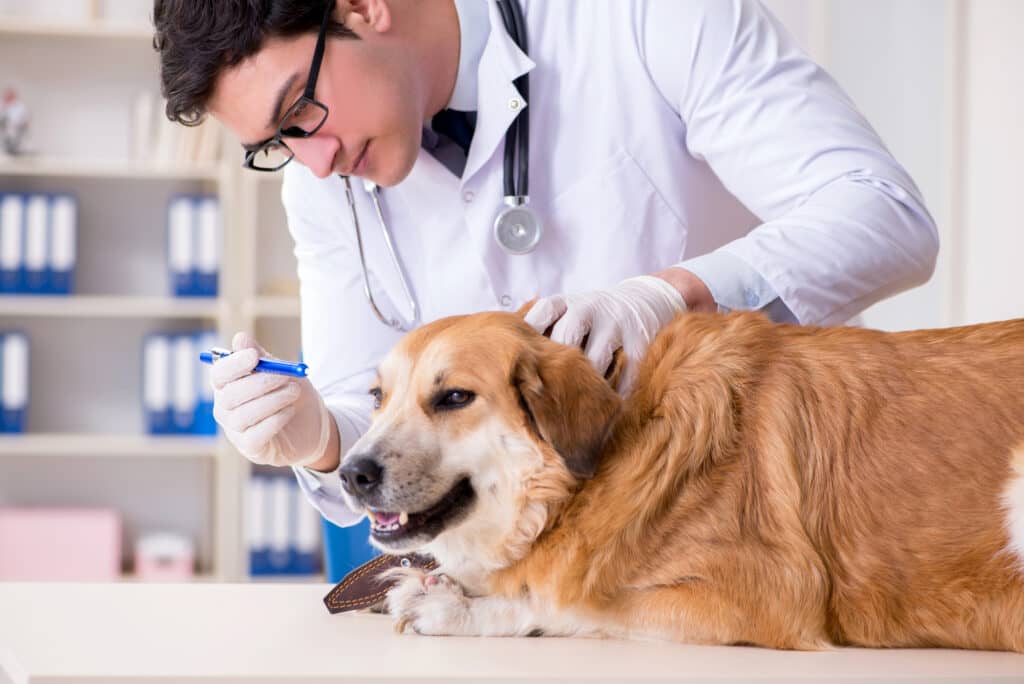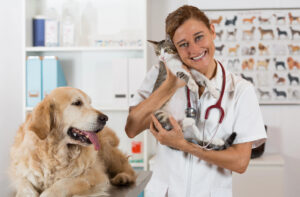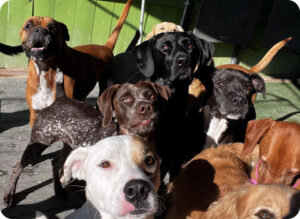
What to Know Before Getting Pet Insurance for Your Dog
Dog owners can rest easy knowing that any medical emergencies or accidents that may occur during their pet’s lifespan are covered by pet insurance. The pet insurance industry, like the human insurance market, is flooded with options, making it difficult to pick the best policy. We’ve laid down the essentials of pet insurance that you should know before signing up for a plan so you can protect your furry buddy with confidence.

Boarding Clients!*Discount does not apply during holiday/peak rate periods.

Different Types of Pet Insurance
There are two primary types of pet insurance: accident-only and accident-and-illness.
Accident-Only Plans
Broken bones, foreign object ingestion, lacerations, and other ailments sustained in accidents are the primary focus of accident-only policies. These policies cover everything from unexpected trips to the veterinarian to X-rays and bloodwork to prescription drugs and surgical procedures. Accident-only insurance, on the other hand, only covers accidents and not illnesses or diseases.
Accident-Illness Plans
Plans that cover both accidents and diseases are called “accident-illness plans” (or “comprehensive coverage”). The costs associated with diagnosing and treating your dog should it become ill or contract a virus are covered by this policy. In addition, this sort of plan can cover preexisting disorders including chronic diseases and genetic anomalies, however, there may be additional restrictions for each.

What Pet Insurance Does Not Cover
Keep in mind that your pet’s insurance will only pay for medical expenses that arise after your coverage has already gone into force. Pet insurance does not pay for treatment of conditions that existed before enrollment and were diagnosed by a veterinarian. Preventive care such as annual exams, wellness visits, spaying/neutering, vaccinations, and the like are often not covered by a standard pet insurance policy.
Insurance Add-Ons (Riders)
You can tailor your pet insurance policy to meet your unique needs by adding optional components known as riders. These riders supplement your primary policy to give your pet complete protection.
Typical Accompanied Add-ons:
• Dental treatment: Typically, not included in basic insurance plans.
• Annual vet checkups: Covering regular health checkups for your pet.
• Wellness-related services: Extending coverage to treatments and some preventative medications, such as those for ticks, mites, and fleas.
• Factors Impacting Pet Insurance Costs: The cost of pet insurance can vary significantly based on various factors:
Factors Impacting Pet Insurance Costs
The cost of pet insurance can vary significantly based on various factors:
Breed of Dog
Premiums for insuring certain dog breeds may be more expensive than expected under some policies. Some insurance companies may not cover any animals of a given breed.
Age of Your Dog
Your dog’s age may affect his or her insurance premium. Premiums for senior dogs may go up every year because they often need costly medical care and are more likely to get sick. Early registration is recommended because some pet insurance plans have age restrictions.
Size of Your Dog
Insurance rates for larger dogs tend to be higher due to the increased potential cost of medical care.
Geographic Location
Living expenses and access to veterinary care can vary by region, which can affect your insurance premiums.

Coinsurance
After your insurance covers a portion of your costs, you will have a percentage (called coinsurance) that you will be responsible for paying. If your insurance covers 70% of therapy, for instance, you will be billed for 30%. This may alter your regular premium.
Pet Insurance Plans Have Deductibles
The deductible is the out-of-pocket expense you’ll have to make before your insurance kicks in. Deductibles for pet insurance often range from $100 to $1,000. Insurance premiums can be reduced by selecting a greater deductible, but selecting no deductible at all can have the opposite effect.
Remember that the deductible is an annual expense, so after you’ve paid it for the policy year, you won’t have to worry about it again for the rest of the claims you file that year. This is distinct from coinsurance, which is your portion of the bill after insurance pays its share but before you get your full reimbursement.
Waiting Period
There may be a deductible or waiting period before your pet insurance kicks in with some policies. It is especially important to read and comprehend the waiting time provisions in your insurance if your dog is either older or of a larger breed that is more prone to health difficulties.
Finding the Right Pet Insurance for You and Your Pup
Choosing the finest dog insurance is important because it will let you give your pet the best care possible without breaking the bank. Insurance for your pet should be tailored to both your financial situation and the individual demands of your companion animal.
Personalization is essential in the field of pet insurance. Your dog can get the protection it needs without breaking the bank thanks to the policy’s flexible coverage options and optional riders. After all, our pets are members of the family, therefore we owe it to them to give them the finest care possible.
What to Consider Before Buying Pet Insurance
There are a few things to think about before committing to pet insurance:
1. Find the Right Coverage
Cats, dogs, bunnies, birds, and horses are just some of the species that can benefit from the specialized coverage offered by pet insurance. Consider your pet’s breed and probable health problems in determining how much insurance it will need. Insight into breed-specific health issues is available from your vet.
2. Shop Around
Compare rates and services offered by various insurance companies by requesting quotes. You’ll need to remember specifics to make a good choice.
3. Understand Policy Costs
Find out how the age and breed of your pet, as well as the type and amount of coverage, affect your premiums. Please inquire about multi-pet insurance discounts.

4. Review the Policy
The policy’s terms, including deductibles, co-pays, coverage limits, exclusions, and pre-existing conditions, must be read and understood well. Make sure the vet you choose is accepted by your insurance company.
5. Consider Waiting Periods
Keep in mind that there may be a 10- to 30-day waiting time before coverage kicks in. If your pet is getting up in age or is prone to health problems, you should look for coverage with a short waiting period.
6. Explore Optional Benefits
Some insurance provides medical coverage as a given, while others include additional coverage for things like death, boarding kennel costs, vacation cancellation, injury to a third party, and so on.
To sum up, canine health insurance is a wise financial commitment. You may choose the finest pet insurance for your needs and budget by learning about the many coverage options, their associated costs, and the specifics of each policy. Keep in mind that your pet is an individual and create a policy that reflects that fact so that your companion animal always gets the attention it needs.


















